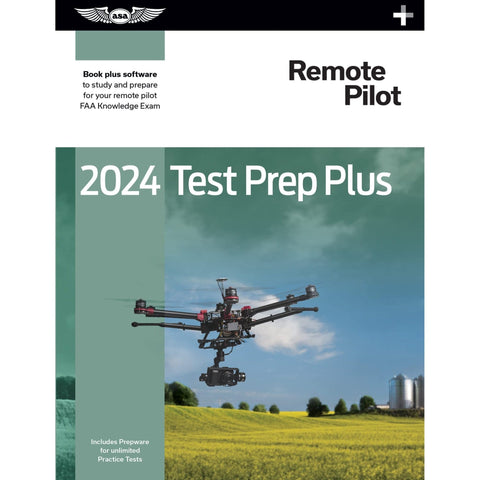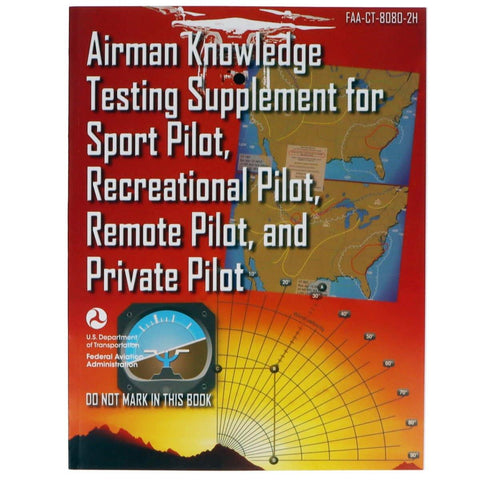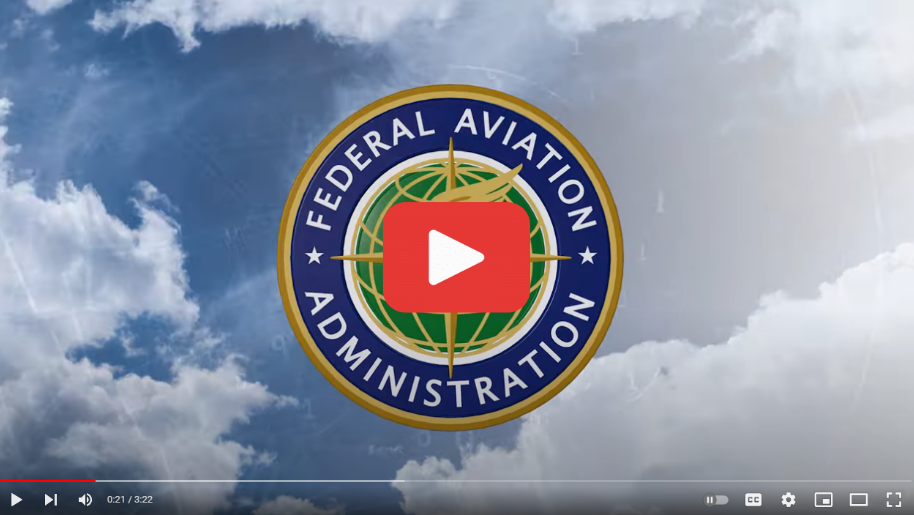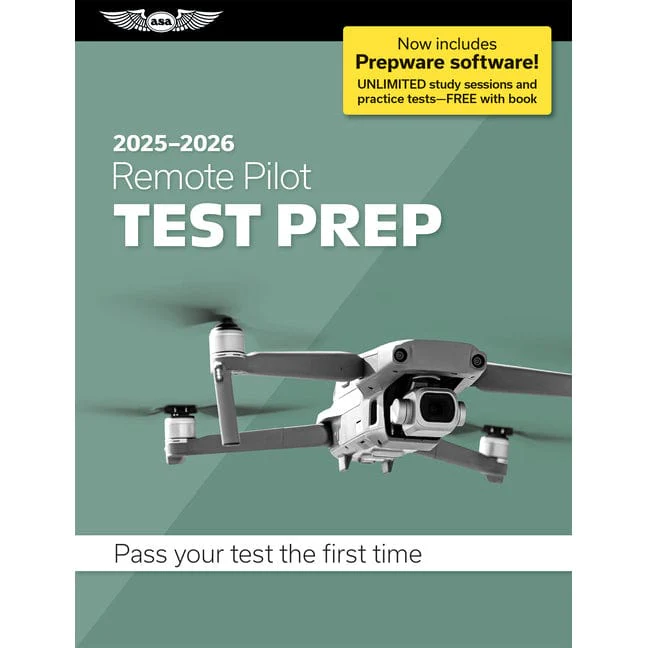Did you know that if you intend to use your drone for commercial-related work you need a remote pilot certificate? Did you know that even recreational flyers need to pass a safety test? Many don't! You're required to pass a part 107 test in order to become an FAA-certified drone pilot.
But how exactly is this accomplished? We'll share with you all the steps you need whether you're interested in drones recreationally or want to get your drone license to build a lucrative career as a remote pilot!
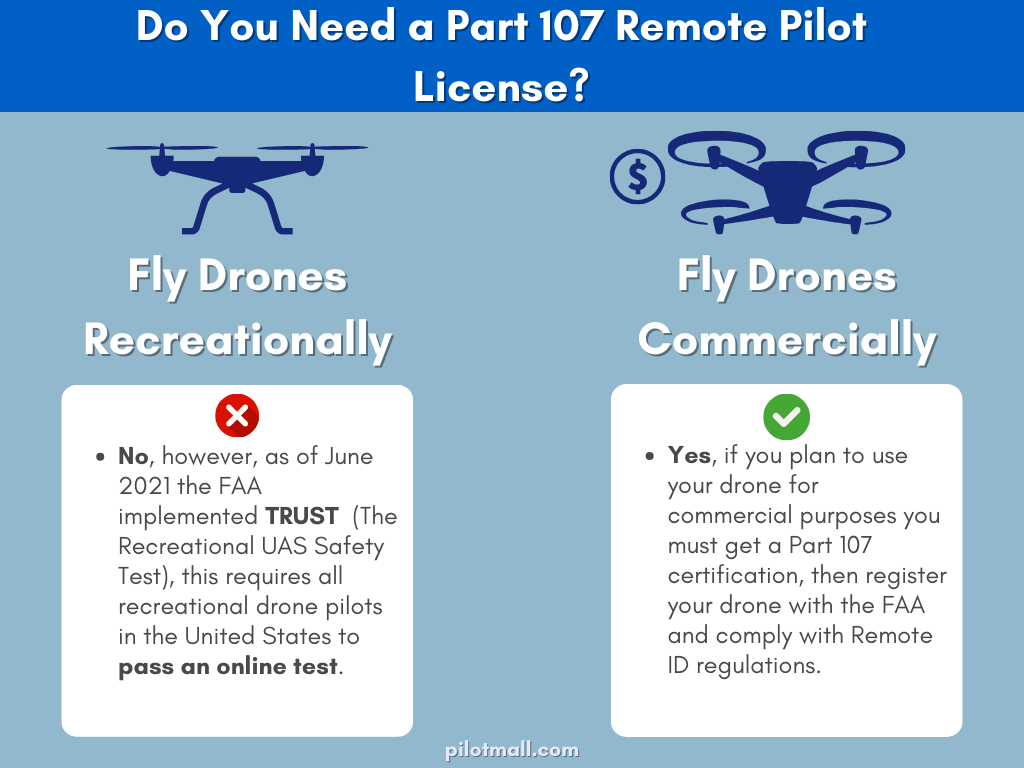
1. Do You Need a Remote Pilot License?
If you intend to fly recreationally or commercially, the FAA wants you to pass a knowledge and safety test. Starting in 2016, remote pilots who intended to use their UAS for commercial purposes had to get a Part 107 license, but recreational pilots did not need to get this certificate.
As of June 2021, TRUST was formed, which stands for "The Recreational UAS Safety Test". This is an online test to make sure drone users understand the FAA rules for recreational flight.
2. How to Get a Part 107 License
If you are interested in becoming a commercial drone pilot, you will have to earn a Remote Pilot Certificate that is provided by the Federal Aviation Administration (FAA). The first step is confirming that you meet their eligibility requirements.
Requirements
To qualify for your drone pilot license you will need to be:
-
16 years or older
-
Proficiently speak, write, and read English
-
Maintain both a good physical and mental condition for flight safety
-
Successfully pass the initial aeronautical knowledge test
If You Already Are a Part 61 Certificate Holder
If you are already an existing Part 61 certificate holder(such as those who are certified private pilots or commercial pilots), and you have had a flight review within the previous 24 months, you will need to complete an initial online training course and fill out the electronic Form 8710-13 on IACRA.
Take the training completion certificate along with your more current flight review and your photo ID to an FAA-certified flight instructor (CFI) or an FAA-designated pilot examiner (DPE).
Only a DPE can issue you a temporary remote pilot certificate, CFIs can only process the application for you. You will then receive your permanent remote pilot certificate in the mail.
After that, you will need to keep up-to-date with an online recurrent training course every 24 months to prove your knowledge of aeronautics.
Studying for the Knowledge Exam
Once you receive your online course completion certificate you should be ready to take your initial aeronautical knowledge exam. Commercial drone pilots will be expected to understand many of the same basic flight, airspace and weather principles that airplane and helicopter pilots must learn.
We recommend these books to help aid you in your study process:
ASA 2024 Remote Pilot Test Prep Book
We can't recommend this book enough for those who are interested in being fully prepared for their exam. This test preparation book was created by professionals in the remote piloting field. The ASA Remote Pilot Test Prep Book is designed to be easily understood by anyone and breaks down complicated concepts to provide a more accessible learning experience.
ASA Airman Knowledge Testing Supplement
The ASA Airmen Knowledge test supplement is the exact same book that the testing center provides. Within it, you'll find all the figures used with the computer test and can familiarize yourself with them before taking your exam.
Signing up for IACRA
Before you can take the test for your drone FAA license, you will need to create a profile with the Integrated Airmen Certification and Rating Application (IACRA) and get an FAA Tracking Number (FTN).
Taking the Test
You will have to make an appointment at an FAA-approved testing center. Have a photo ID on hand when you go in for your exam.
Filling the Form and Getting Your Certificate
Whether you are a Part 61 pilot or new to piloting, you will need to fill out Form 8710-13, then take it along with these items
Maintaining Currency
After receiving your remote pilot certificate you will need to make sure that it is present with you during all UAS operations and to maintain currency through taking online training for recurrence every 24 calendar months. Stay updated on both your aviation knowledge and any changes in rules or regulations regarding unmanned aircraft systems.
Courses for maintaining currency:
-
For Part 107 Certificate holders: Part 107 Small UAS Recurrent (ALC-677) online training course
-
For Part 107 pilots who are also current under Part 61: Part 107 Small UAS Recurrent (ALC-515) online training course
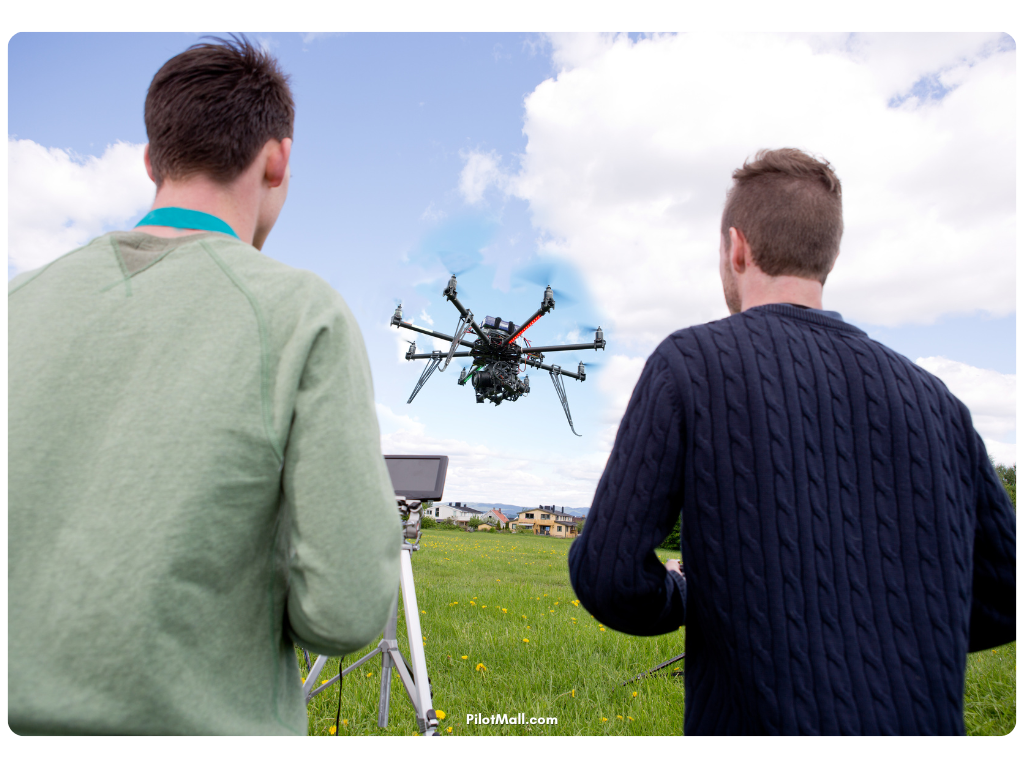
3. sUAS Drone Registration
You have your remote pilot certificate and you're current, can you fly your drone commercially? Not quite, all drones that weigh over 0.55 pounds (250 grams) will need a FAA tracking number, especially for the purpose of commercial drone operations. You will need to have this renewed every 3 years. If your drone weighs 55 pounds (25 kg) or more then you would need to register it like an aircraft.
Remote ID
As of September 16th, 2023, a new requirement called Remote ID was formed. Remote ID helped law enforcement and the FAA track down drones that are being either flown unsafely or in an area they shouldn't be.
We recommend reading our guide on "How to Register a Drone and Legally Fly in the US" for more in-depth details.
Restrictions
Make sure you fully understand all federal regulations regarding Part 107 and avoid breaking any of the laws.
Here are some of the restrictions:
-
Restricted and No-Fly areas: Drone use may be limited or require authorization in parks, wildlife reserves, and other environmentally sensitive areas to protect the well-being of animals and their habitats. You will also not be allowed to fly your drone in certain designated areas such as airports, military bases, government buildings, and critical infrastructure due to security and safety reasons.
-
Invading privacy: You cannot use your drone to film people or their property without their consent.
-
Line of Sight: Your drone will need to stay in your visual line of sight (VLOS)
-
Altitude Restrictions: You will only be able to fly your drone up to a certain altitude to not cause problems with airport operations, air traffic, or airspace.
You will learn many other restrictions through completing the courses, but keep these few we've outlined in mind. We recommend printing out a list of all the restrictions and carrying them with you in your flight operations bag.
Drone Maintenance
As a professional drone pilot, you will need to keep up with and record any maintenance you perform on your drone. Maintain a logbook for your registered drone and have a preflight inspection procedures operation in place.

Frequently Asked Questions
-
How long does it take to get a Part 107 drone license?
The time it takes varies depending on your studying capabilities, the timing for scheduling a test, and the application processing time. This is usually anywhere from two weeks to two months.
-
What are the limitations of a commercial drone license?
Commercial drone operation may be limited to only flying during daylight hours, maintaining visual contact with the drone, and avoiding flights over non-participating people. Keep in mind any airspace restrictions may also apply, along with obtaining waivers for certain types of operations.
-
Can I fly a drone commercially without a Part 107 license?
No, commercial drone operation in the US requires a Part 107 Remote Pilot Certificate, which you can obtain by passing the FAA Knowledge Test and meeting eligibility requirements. Violating these regulations may lead to fines and other forms of legal repercussions.
-
How much does it cost to obtain a remote pilot certificate?
The pricing may vary, FAA Knowledge test fees can run up to $160, but contact the testing center you intend to go to for accurate pricing. Registering your drone will cost an additional $5. Consider the cost of training materials as well such as books, or classes.
Takeaway
With the rising demand of drones for both recreational and commercial use, aspiring drone pilots need to understand the necessary steps to receive a remote pilot certificate.
We know that everything outlined by the FAA can seem daunting, but by following them and keeping up-to-date on regulations and training requirements, you will be able to safely and legally operate your drone.
Becoming a certified drone pilot can open up a world of opportunities in a new and growing career field. Drones are used by the film industry, industrial fields, real estate, environmental fields, and more! They need more drone pilots who are willing to take their UAS, and their flight bags to travel to the site and capture amazing footage.
All the studying will be well worth it in the end.
Interested in Aviation-based Careers?
Our guides are designed to help!
Did you find this article helpful?
Do you think we missed anything important about getting your commercial drone pilot license? Let us know in the comments below!


